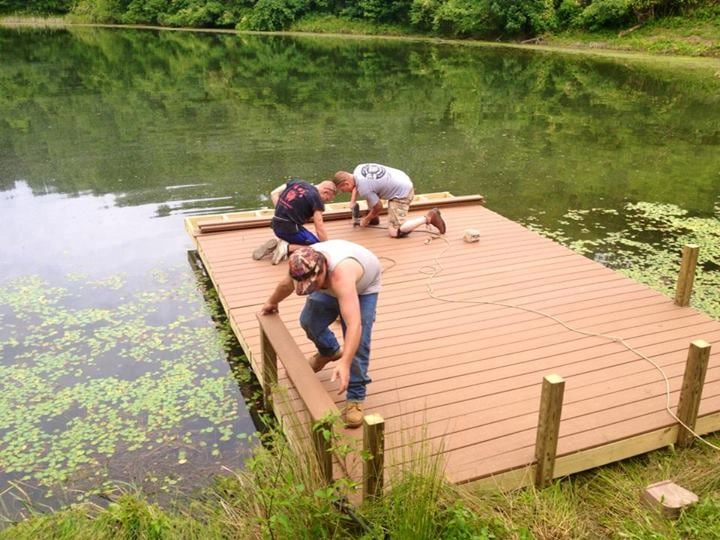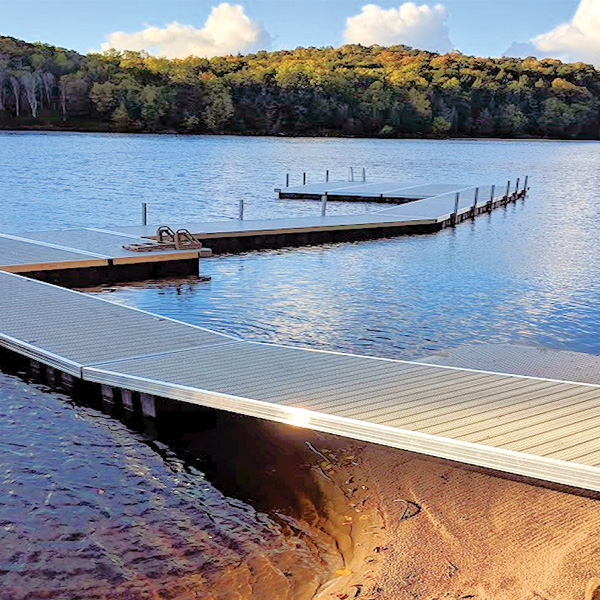Floating Docks: The Suitable Selection for Versatile Water Gain Access To
Floating docks present a compelling remedy for a range of water gain access to requires, providing convenience that transcends standard mooring alternatives. The modular nature of floating docks promotes modification, catering to specific requirements.
Advantages of Floating Docks
Floating docks offer countless benefits that improve water gain access to for various applications. Their capability to climb and fall with altering water degrees makes them especially useful in environments with fluctuating trends or seasonal variants. This flexibility guarantees that vessels can quickly tie without issue for the water's depth, offering a dependable system for leisure, commercial, and commercial uses.
Furthermore, floating docks are commonly built from resilient materials that stand up to rust, making them appropriate for long-lasting use in marine environments. Their installment is normally much less invasive than conventional fixed docks, decreasing the environmental impact and facilitating quicker release (floating dock services). This versatility permits less complicated moving or reconfiguration according to user demands or ecological modifications
Safety is another vital benefit; floating docks can supply steady accessibility for people boarding or disembarking from watercrafts and decrease the risk of accidents related to unsteady surface areas. Moreover, they can be created to suit a range of accessories, such as fenders and cleats, improving capability. Generally, floating docks represent an effective service for enhancing water gain access to across diverse markets while advertising security and environmental sustainability.

Sorts Of Floating Docks
Numerous sorts of floating docks deal with different demands and settings, each created with certain functions to enhance functionality. The most common types consist of modular docks, which contain interlacing sections that allow for easy personalization and expansion. These docks are ideal for leisure use, as they can be customized to fit various boat dimensions and water conditions.
An additional prominent option is the fixed floating dock, which continues to be anchored in position yet drifts with changing water degrees. floating dock builder. This kind is especially suited for locations with minimal tidal changes, giving steady gain access to for angling or swimming. Additionally, there are drive-on docks, which include a sloped style that enables watercrafts to conveniently drive on and off, making them ideal for individual watercraft and smaller sized vessels
For industrial applications, sturdy floating docks are offered, constructed from reinforced materials to endure considerable lots and harsh aquatic settings. Eco-friendly floating docks make use of sustainable materials and designs to lessen environmental effect, typically integrating attributes like plants to sustain neighborhood wildlife. Understanding the various kinds of floating docks ensures that customers can pick the most appropriate remedy for their certain requirements.
Installation Process Introduction
A successful installment of floating docks needs careful preparation and interest to detail to make certain ideal performance and safety and security. The preliminary action includes assessing the website conditions, consisting of water depth, existing, and potential barriers. This assessment this content educates the selection of the ideal dock materials and layout tailored to the details environment.
Following, obtaining needed permits is vital, as lots of jurisdictions have regulations relating to construction on water bodies. Once approvals are safeguarded, the installation can proceed. Begin by preparing the structure, which may entail anchoring systems or pilings customized to the dock kind and neighborhood problems.
Following the structure configuration, assemble the dock areas according to producer requirements. Guarantee that all parts are firmly attached and aligned to hold up against ecological stresses. Position the dock in the marked location, ensuring it is degree and stable.

Maintenance Tips and Best Practices
After the installation procedure is full, recurring upkeep plays an essential role in ensuring the long life and capability of floating docks. Normal assessments ought to be conducted to identify any kind of indications of wear, damage, or damage - floating docks. Inspect for any loosened fittings, splits, or separation in the dock areas, as these can jeopardize structural stability
Cleaning the dock is crucial to eliminate debris, algae, and various other build-up that can impact its appearance and safety and security. Utilize a gentle stress wash occasionally to maintain sanitation without causing damages to the surface. Furthermore, applying a safety sealant every couple of years can help improve long life and resist ecological wear.
Pay attention to the mooring lines and anchors, ensuring they are cost-free and protected from deterioration. Replace any type of abject components without delay to avoid dangers. Seasonal adjustments may likewise be essential; during extreme weather conditions, enhancing the dock or rearranging can avoid damage.
Applications for Floating Docks
Floating docks offer a wide variety of applications, dealing with both commercial and entertainment requirements. In recreational settings, they supply smooth access to waterways for activities such as boating, fishing, and swimming. Their adjustable nature enables for installation Go Here in differing water degrees, making certain stable and safe gain access to no matter tidal fluctuations.
Commercially, floating docks are vital for marinas and beachfront organizations. They facilitate the docking of vessels, enabling efficient filling and unloading of goods. Their modular design enables easy expansion or reconfiguration to suit altering company demands, making them optimal for boat leasings, trip operations, or fishing charters.
Additionally, floating docks are used in environmental applications such as aquatic research study and environment restoration. They can work as systems for clinical research studies, keeping track of water quality, or conducting wild animals surveys without disturbing delicate ecological communities.
In commercial contexts, floating docks are utilized in building projects, supplying accessibility to hard-to-reach areas for equipment and employees. Their convenience, toughness, and very little impact on the setting make them an ideal option for a variety of applications, improving both functionality and accessibility in numerous water-based environments.
Verdict
In verdict, floating docks stand for an optimal service for diverse water accessibility requires, owing to their adaptability, sturdiness, and modular style. Floating docks serve as a useful property for entertainment, commercial, and environmental tasks, ensuring reliable access to waterways and promoting sustainable methods in aquatic atmospheres.
Floating docks present a compelling service for a range of water gain access to needs, using adaptability that goes beyond conventional mooring alternatives.Floating docks deal countless benefits that improve water gain access to for numerous applications. Generally, floating docks stand for an efficient service for enhancing water access across varied fields while advertising safety and environmental sustainability.
An additional preferred choice is the stationary floating dock, which continues to be secured in location however floats with More about the author altering water levels.In conclusion, floating docks represent an optimum option for diverse water access requires, owing to their versatility, sturdiness, and modular design.